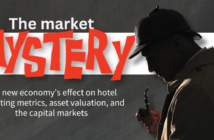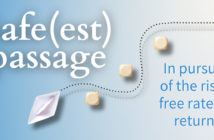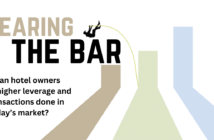With inflation rising, hoteliers need to buckle down now on short-term plans
When the consumer price index rose 6.8% in November 2021 year over year, it represented the largest 12-month increase since June 1982. This uptick was eye-popping and left many wondering how long it will last.
Federal Reserve Chairman Jerome Powell said in a hearing on November 30, “It now appears that factors pushing inflation upward will linger well into [2022],” although he also suggested, “inflation will move down significantly over the next year as supply-and-demand imbalances abate.”
As a result, borrowing costs for hoteliers seeking financing likely will rise around 1%. An increase from near zero to 100 basis points is significant and will affect price inputs for borrowers.
Inflation and rising rates likely will put pressure on real estate values and create issues for those executing ground-up construction plans. The cost of wages, goods, lumber, and structural metal have been rising and could throw budgets off course. Hotel owners need to be strategic and re-evaluate their construction pro formas to ensure plans can withstand these cost increases.
HOW TO APPROACH FINANCING
Hoteliers using floating-rate debt to execute transitional business plans also need to be disciplined because of the likely rate increases. A recent rule change from the Small Business Administration now allows SBA 7a borrowers, which typically carry rates between 5%-6%, to refinance into fixed-rate debt through the SBA 504 program, plus pull cash out for working capital or property improvement plans (PIPs). Borrowers also can refinance out of bridge or conventional construction loans into an SBA 504, which can lower their rate, increase leverage, and provide working capital.
DEFERRED PIP REQUIREMENTS & COVID
Supply chain disruptions are at the top of the list of inflation causes, but hotel owners also need to keep an eye on the continued impact of COVID-19 and its variants, which will affect business-travel trends and behavior throughout 2022.
Hotels in larger commercial areas that are specifically reliant on business travel have severely underperformed, while leisure assets have bounced back to some extent. However, it’s still unclear how Omicron will affect demand. According to research firm STR, U.S. hotel occupancy reached an all-time high on Christmas.
Many hoteliers have seen cash flow decrease because of COVID-19 but still need to finance PIPs and deferred maintenance. A high-leverage vehicle like the SBA 504 refinance includes the ability to cash out up to 20% of the property value for PIPs. Other methods include mezzanine financing, which bridges the gap between debt and equity financing, or recapitalization, but mezzanine or preferred equity for hotels can be expensive, often carrying a rate between 15% and 20%.
A LOOK AHEAD
Supply chain issues that are most affecting inflation appear to be peaking and businesses will find new ways to navigate those logistics issues. Eventually, this will lead to a decrease in inflation, but hoteliers can’t count on quick solutions as inflation continues to rise in the near term. They’ll need to be strategic in their operations and renovation plans until inflation eases.
Discipline in proceeding with ground-up construction projects and opportunities to refinance from floating-rate to fixed-rate debt are the two big factors that hoteliers need to consider. These solutions are the most effective way to navigate the rise in inflation that likely will continue for at least the first few months of 2022.
is CEO of Liberty SBF, an experienced commercial real estate finance company. With a special expertise in small-balance commercial lending, Liberty SBF positions to address the needs of small businesses facing a challenging credit environment.


 Alexander Cohen
Alexander Cohen

